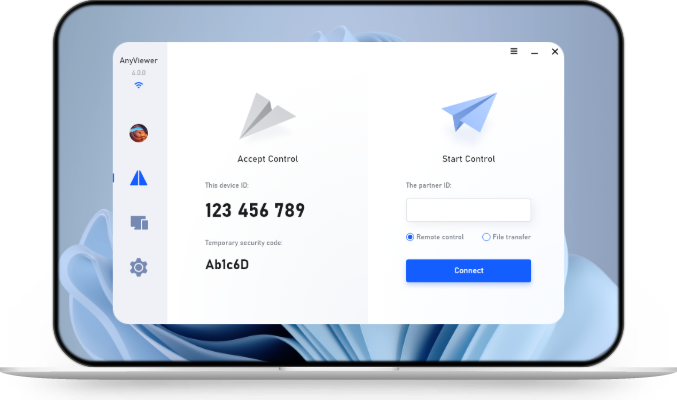RDP Error: User Account Is Not Authorized for Remote Login [Fixed]
Are you troubled by the RDP "user account is not authorized for remote login" error? Don't fret. Dive into the post to gain a comprehensive understanding of the causes and four tested solutions to address the issue.
How do I authorize an account for remote login?
I am trying to use Remote Desktop to remotely access another PC on our domain. If I use an administrator account, this works fine, however, when I use a normal user it gives the error: The connection was denied because the user account is not authorized for remote login. How do I authorize an account for remote login? Help me fix this issue please.”
-Question from Linda
Possible causes of “The connection was denied because the user account is not authorized for remote login” error
When attempting to connect to a Windows instance using Remote Desktop, you may encounter the error message "The connection was denied because the user account is not authorized for remote login." This error occurs when the username you're using lacks the necessary permissions to log into the machine via RDP (Remote Desktop).
To resolve this issue, proper permission must be granted for your username to access the machine via Remote Desktop. This authorization is managed by the administrator of the machine you are trying to remote into.
How to fix the RDP "user account is not authorized for remote login" error [4 solutions]
To resolve the RDP "user account is not authorized for remote login" error, consider the following four tested solutions.
Solution 1. Provide sufficient rights to your user account
Step 1. Press "Win" + "R" and type in "lusrmgr.msc", and then click on "OK".
Step 2. Click on "Users" and then double-click "User account". And then locate on the "Member of" tab. Click on "OK".
Step 3. If there's no Remote Desktop Users group under Administrators, click "Add". Select "Advanced" and then click on "Find Now". After you find the name of the user or groups, click on "OK".
Step 4. Now, you can see the "Remote Desktop Users" created. Click on "Apply" and then click on the "OK" button.
Solution 2. Ensure remote connection permission is allowed
Step 1. Press "Win" + "R" and type in the "control panel", and then hit "OK".
Step 2. Click on "System and Security".
Step 3. Choose "Allow remote access" under the "System".
Step 4. Locate the "Remote" tab, and choose "Select Users".
Step 5. Then choose "Advanced".
Step 6. Click "Find Now" just as the above shown, then follow the same steps to add the user name, and finally click on "OK".
Step 7. After that, check if the RDP "The connection was denied because the user account is not authorized for remote login" error is solved.
Solution 3. Change the Log on for Remote Desktop Services
Step 1. Press "Windows Key" + "R" and input "services.msc" and press "Enter" key.
Step 2. Find "Remote Desktop Service" from the list and then double-click it.
Step 3. Switch to the "Log On" tab, and select "Browse".
Step 4. In the "Select User" window, select "Advanced".
Step 5. Click on the "Find Now" button in the window that appears.
Step 6. Double-click on "NETWORK SERVICE" under the search results section.
Step 6. Click "OK" in the Select User window.
Step 7. Click the "OK" button in the "Remote Desktop Services Properties" window.
Step 8. Right-click on "Remote Desktop Services" and select "Restart".
Solution 4. Create a new Security Group for Remote Desktop Services
Step 1. Press "Windows Key" + "R" and type in "secpol.msc" and press the "Enter" key.
Step 2. Navigation: Local Policies > User Rights Assignment.
Step 3. In the list of policies, find "Allow log on through Remote Desktop Services" and double-click it.
Step 4. Verify if you can find "Remote Desktop Users" listed. If yes, click on "OK".
Step 5. If not, choose "Add User or Group".
Step 6. In the "Select Users or Groups" window, type "Remote Desktop Users" and click "OK".
Step 7. You'll encounter a "Name Not Found" window. Verify the object name and click the "OK" button.
AnyViewer: The easiest and quickest way for remote access
If you've encountered frustrating RDP errors, it's time to explore a more reliable Remote Desktop alternative: AnyViewer.
AnyViewer stands out as a robust and user-friendly solution for remote access and control. Whether you're a business professional needing to troubleshoot a colleague's computer or a tech-savvy individual helping a friend with technical issues, AnyViewer offers the perfect platform to connect seamlessly.
So, why should you consider AnyViewer over RDP?
-
Ease of use: AnyViewer's intuitive interface makes it incredibly easy to set up and use. Unlike RDP, which often requires complicated configuration settings and firewall adjustments, AnyViewer works right out of the box. Simply install the software, and you're ready to connect to remote devices with ease.
-
Windows compatibility: One of the standout features of AnyViewer is its Windows compatibility. Whether you're using a Windows Home or a Standard version, AnyViewer has you covered. This flexibility ensures that you can access and control remote devices regardless of the Windows versions they're running.
-
Versatility: Beyond remote desktop access, AnyViewer offers a range of features to enhance collaboration and productivity. With features like file transfer, screen sharing, and multi-user support, AnyViewer empowers teams to work together efficiently, regardless of their physical location.
-
Security: Security is paramount when it comes to remote access, and AnyViewer takes it seriously. With end-to-end encryption and two-factor authentication, you can trust that your remote sessions are protected from unauthorized access and cyber threats.
Step 1. Click the button to free download, install, and launch AnyViewer on both computers. To access Windows computers from mobile devices, download AnyViewer mobile apps.
Step 2. Go to Log in, and then click Sign up. (If you already have signed up on its official website, you can log in directly.)
Step 3. Fill in the signup information and you can see you successfully logged in to AnyViewer. Your device will automatically be assigned to the account.
Step 4. Log in to the same AnyViewer account on the two devices, then you can achieve unattended access by clicking One-click control from the controller.
✍ Important note: To access additional privileges, consider upgrading to the Professional or Enterprise plan. With this upgrade, you'll unlock benefits such as increased device allowance for one-click control, privacy mode, unlimited concurrent remote sessions, faster file transfer speeds, additional screen walls, group management capabilities, and more.
Conclusion
In conclusion, resolving the RDP "user account is not authorized for remote login" error involves granting proper permissions for remote access. Solutions range from adjusting user rights and remote connection permissions to configuring Remote Desktop Services settings and creating security groups.
Additionally, exploring alternatives like AnyViewer offers user-friendly remote access with enhanced collaboration features and robust security measures. By following the provided steps or opting for alternative solutions, users can efficiently troubleshoot and resolve remote access issues, ensuring seamless connectivity and productivity across devices and platforms.

